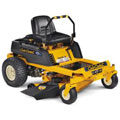Lawn Disease, The Dollar Spot.
Dollar spot disease is a kind of lawn disease that kills and infects different kinds of grasses. This disease grows in distinct and small circles around the size of a small pancake or a silver dollar. It is easy to take the dollar spots lightly because they do not look dangerous but they can cause serious damage to the lawn.
Dollar spot disease survives during winter in the plant parts in the soil and thatch and it begins to start again as the temperature gets to sixty degrees. Aside from temperature, other factors that cause the disease include low fertility of nitrogen, low moisture in soil when humidity is high, too much mowing during hot climate, and too much thatch. A quality program is needed to provide the lawn proper mixture of fertilizers in order to prevent dollar spot. In addition, your lawn should be mowed or watered regularly.
Identifying Dollar Spot Disease

You can identify dollar spot disease in your lawn in two ways. The first way is through the size and shape of the area that is damaged. Usually, individual spots are very distinct and circular in shape, which are only a few inches in diameter. Another sign of dollar spot disease is the appearance of lesions on grasses. The disease can cause bands in hourglass shape across the grass blade, which is light tan in color with a reddish-brown edge. It can kill the entire grass and your lawn needs reseeding or renovation to control the disease.
How Do I Prevent, Or Get Rid Of Dollar Spot?
It is necessary to saturate your soil regularly because grass diseases including the dollar spot occur in soil with low moisture. However, make sure to avoid watering frequently during the late afternoons or evening. Use proper mixture of fertilizers in correcting the nitrogen fertility during the times of the disease activity.
You can apply treatments such as fungicide in getting rid of dollar spot disease. However, fungicide is not required in residential lawns if the levels of nitrogen fertility are managed properly and other cultural stresses are lessened. Dollar spot disease has different degrees of fungicide tolerance and there are some strains of dollar spot that have become resistant to fungicide, so a particular fungicide may be effective to one disease but not to another. In addition, the use of fungicides can increase disease and insect problems in the future because they can affect the soil organisms such as microbes and earthworms, which help in the decomposition of thatch. In addition, earthworms and other soil organisms improve the health of the grass and help aerate the soil.
You need to have a balanced nitrogen fertility program to control the disease because dollar spot disease is known to be most severe on nitrogen-deficient soil. With a balanced nitrogen soil, the outbreak of the disease will be delayed in the spring and the severity of outbreaks will be reduced. In addition, the performance of fungicide will improve and the recovery of turf will be faster.
Proper scheduling of irrigation is necessary to control dollar spot disease. This is due to how fast the period of dew is relative to the infection extent, so the prolonged practice of irrigation will greatly contribute to the outbreaks of the disease.
read more at blaircountylawnservice.com/articles/disease
